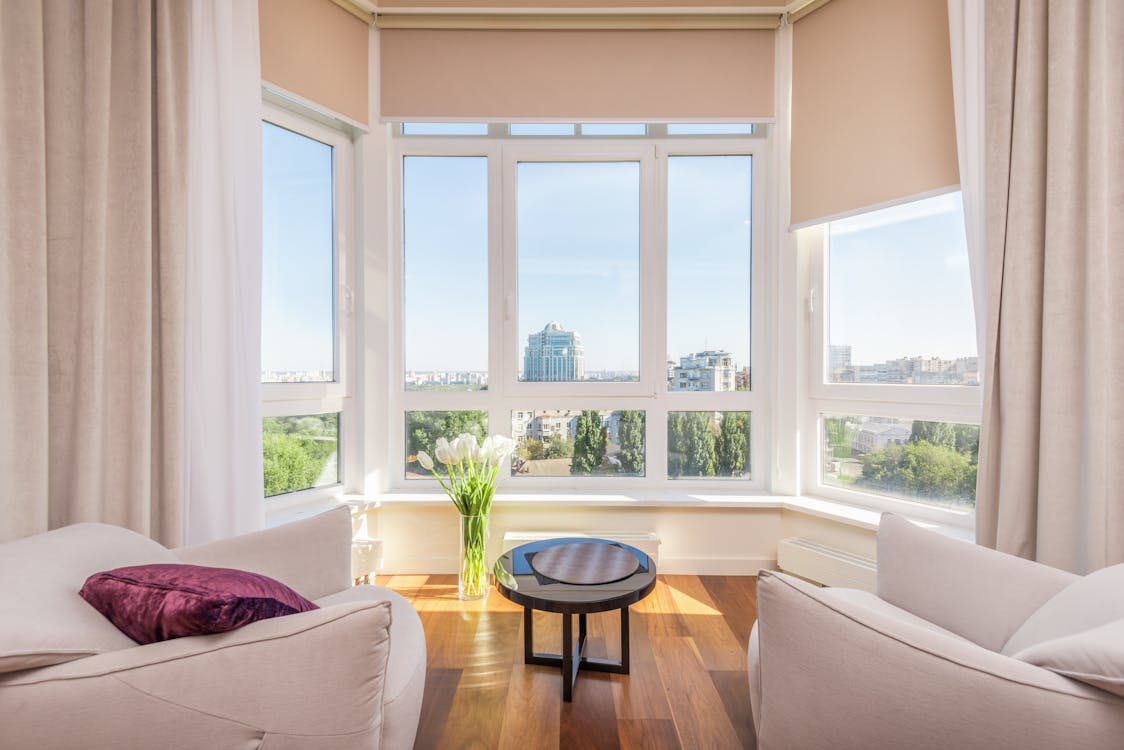Designing for Healing: Home Design Tips for People With PTSD
Beauty is a human experience that has deep connections with our mental health. This is because studies show that aesthetics trigger the reward systems in our brains.
Simply put, aesthetic designs elicit emotional responses and make us feel happy. As such, someone with PTSD can benefit from having a beautiful home.
Today, we dive into home designs for people with PTSD. Let’s explore the best ways to design interiors for healing!
What Is PTSD?
PTSD, or post-traumatic stress disorder, is a condition experienced by those who’ve witnessed a traumatic event. These events can include war, sexual assault, natural disasters, abuse, or accidents.
People with PTSD feel anxious even when there’s no immediate danger. Fear can affect their lives and interfere with their school, work, and relationships.
Below are symptoms someone with PTSD may have.
- Intense flashbacks
- Difficulty sleeping and concentrating
- Lack of motivation and interest in activities
- Detachment and loneliness
- Stomachaches and headaches
- Memory problems
- Negativity and irritability
Recovering from PTSD may require years of therapy sessions and medications. During this time, the patient must have a safe environment to relax and breathe.
The Importance of Home Design for People With PTSD
Research in neurobiology shows that your environment influences the development of your brain. Visual art also activates your parahippocampus, which plays a role in memory retrieval.
This means that, for people with PTSD, having a beautiful environment can help them heal.
Designers should ensure they create a home that’s stress-free, beautiful, and functional for clients with PTSD.
10 Home Design Tips for People With PTSD
So, how do you design a home for people with PTSD? Here are ten tips you should know about!
Declutter the Home
Cleanliness has a direct effect on our mental health.
According to VeryWell Mind, having clutter in your surroundings leads to decreased focus and tension. What’s more, some objects may remind you of past traumas.
Because of this, decluttering the home should always be the first step in redesigning for people with PTSD.
You can start by removing anything that doesn’t make you happy. Donate the mess to charity or have a yard sale to earn extra cash.
Know that the sight of a clean home can make you feel less overwhelmed and boost your mood!
Let the Light In

Natural light has many benefits to your physical and mental health. It helps your body develop vitamin D, which reduces your risk of heart disease and weight gain.
On top of this, natural light allows you to facilitate your sleep cycle. You wake up earlier and sleep better at night. It also wards off depression, so it’s important for people with PTSD.
If the home you’re designing has a small window, you can make it brighter with a mirror. The mirror acts by bouncing light across the room!
Choose the Right Colors
Chromotherapy is a practice that treats anxiety, depression, and sleep disorders. It teaches that colors can stimulate various emotional responses.
For instance, green is calming, while blue can prevent migraines. Purple may help with meditation, and yellows and oranges boost mood and concentration.
Home designers should be aware of the best colors for people with PTSD.
You can paint walls with lighter shades for the patient’s well-being.
Avoid colors like blood red, which can trigger people with PTSD. Moreover, be careful of using darker shades as they can make a room feel small and stifling.
Prioritize Air Circulation
People with PTSD often experience shortness of breath and disordered breathing. They may have more panic attacks in a closed room without air circulation.
Designers should maximize the room’s airflow when designing a home for people with PTSD. If possible, use large windows and cross-ventilation to let the outside breeze in.
Be sure to remove obstacles blocking the airflow. Keep vents unobstructed and install exhaust or ceiling fans.
Additionally, you can buy electric fans, air purifiers, and humidifiers. These simple appliances can work wonders in making the room comfortable for people with PTSD.
Consider Noise Reduction
Some people with PTSD may feel scared of loud noises from outside. Noises from cars, sirens, or fireworks can trigger difficult memories from the past.
If you worry about the triggering noises, there are ways to soften the sounds in your home.
You may add soundproofing to the walls of your room and pick materials that absorb sound. Having more pillows, carpets, and curtains around the room also helps to minimize sounds.
Lastly, make use of decorations that produce calming sounds. For example, a mini water fountain or a windchime may produce relaxing background sounds for people with PTSD.
Decorate with Plants

Did you know bringing nature into your home isn’t just for aesthetics? Many fail to realize that owning houseplants can affect people’s mental health!
Studies show that indoor plants relax our physiology and enhance our cognition. They have a positive impact on our functions and can even help us recover from stress.
People with PTSD benefit from having plants at home because they can reduce anxiety.
These plants help patients heal faster, increase their happiness, and boost productivity. Not only that, plants clean the air and make the room humid and comfortable for people with PTSD.
Invest in a Security System
The safety of the house is a vital factor you should consider when designing a space for someone with PTSD. Having a suitable security system, in particular, can ease a trauma victim’s mind and make them more relaxed at home.
A few ways to improve security are by installing an alarm, cameras, locks, and lights. You may reinforce windows, doors, air conditioning units, and sheds as well.
Clear Space for Activities

Recreational activities are essential for the recovery of a trauma patient.
Hobbies help victims take their minds off the bad memories and help them heal. Plus, hobbies are a healthy outlet for pent-up emotions. In short, you should create a space where the person with PTSD can do activities.
So, what should the activity room look like?
For people who prefer to meditate or do yoga, a simple room free from distractions will do. Others who love to paint or sew can have a crafting table, easels, and storage.
The contents of the activity room depend on the patient’s hobbies. It’s best to ask them if they have any requests and incorporate their preferences into the design.
Think About Accessibility
In 2020, a small research group in Iran found that 89.1% of all people with PTSD sustained some form of disability. These disabilities are a direct result of the traumatic experiences they encountered.
Therefore, designing a home for people with PTSD means you should take any disabilities into account.
Everything in the home must be accessible to the patient. You may need to widen doorways for wheelchairs or install grab bars, lower tables, and ramps.
Remember to keep the bathroom safe and free from bathing barriers. Finally, design a usable kitchen and consider using smart home technology.
Have an Area for Pets
According to Penn Medicine, having a human-animal bond is one of the best ways to treat PTSD. Some people may have pets as part of their therapy. Others can even have service dogs to help them through disabilities.
When you’re designing a home for someone with a disability, you should ask them whether they plan on living with pets. If the answer is yes, then you can build an area to accommodate animals.
The flooring and furniture should be scratch-proof, and you may need to add a mudroom. On top of that, you should consider additional features like doggy doors, climbing shelves, and pet toy storage.
Key Interior Design Considerations for People With PTSD
Don’t forget these key elements for designing a home for people with PTSD.
- Go for Open Layouts: Most people with PTSD will prefer open spaces and high ceilings. Avoid building cramped rooms that can trigger traumas and claustrophobia.
- Keep It Simple and Natural: Creating a beautiful space doesn’t mean incorporating extravagant decor. For people with PTSD, a simple and natural home design may be the best option.
- Focus on Positivity: Make sure the space is bright, uplifting, and calming. Avoid decor and furniture that may trigger traumas.
- Support Communal Spaces: If the person with PTSD lives with family, it helps to give them a space where they can spend time together. Yet, don’t forget to provide the patient with a safe and private place they can retreat to.
- Think About Maintenance: People with PTSD may have a lack of motivation to clean. Because of this, it helps to design a home that’s easy to maintain and organize.
Conclusion
Home design plays an important role for people with PTSD. A well-designed space can affect a person’s recovery, help them relax, and boost their mood.
If you’re designing a home for someone with traumas, be sure to keep it bright, open, and positive. Pay attention to clutter, air circulation, security systems, and accessibility.
Finally, don’t be afraid to talk to the patient and ask what they need to have in the house. By doing so, you ensure that all their needs are met, and you can give them a safe space to live!




